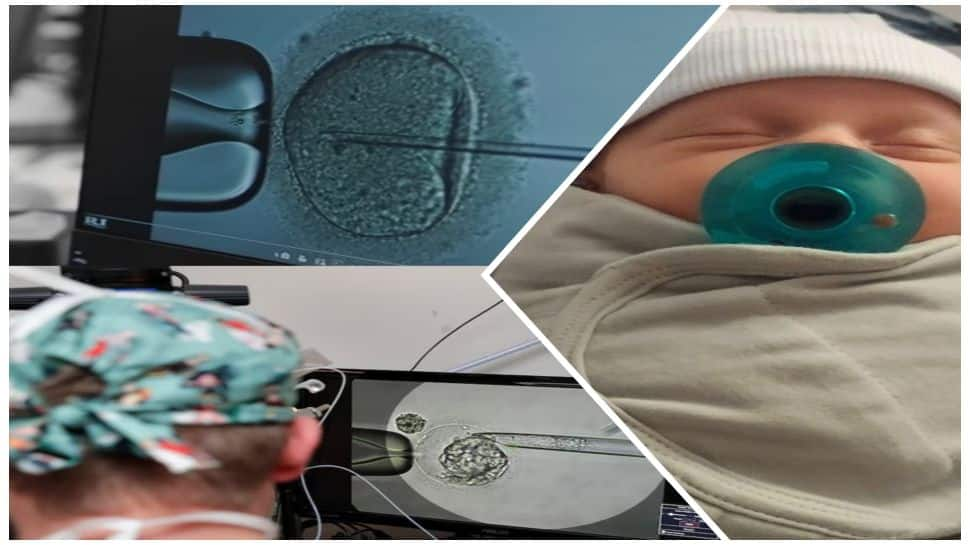New Delhi: A baby named Thaddeus Daniel Peirce was born last week at Ohio in the United States. But this was not another birth. What makes Thaddeus unique is his age, at least, technically. His embryo had been frozen for 30 years before it was brought to life.
The story began in 1994 when Thaddeus’s embryo was created through in-vitro fertilisation (IVF). But instead of being implanted at that time, it was preserved in a frozen state for decades.
In July 2025, it was finally transferred to 34-year-old Lindsey Peirce, who gave birth to a healthy boy. Her husband, Tim Peirce, is 35. At the time the embryo was frozen, both of them were only toddlers themselves.
Breaking a Rare Record
Thaddeus has now become the world’s longest-frozen embryo to be successfully born as a baby. When Lindsey was told about the age of the embryo, she said it felt “surreal”.
Speaking to MIT Technology Review, she said, “We were not trying to break a record. We just wanted a child.”
After seven long years of struggling to conceive, Lindsey entered an embryo adoption programme. That is where they were matched with Thaddeus.
The Embryo’s Backstory
Though Thaddeus is a scientific milestone, his origins are as human as any child’s. His embryo was one of four created in 1994 for a woman named Linda Archard and her then-husband. One of those embryos was implanted in Linda’s womb the same year, leading to the birth of a baby girl in 1994. That baby girl is now 30 years old and has a 10-year-old daughter of her own.
The other three embryos, including Thaddeus, were cryogenically preserved and never used.
Linda always hoped to have another child, calling the remaining embryos her “three little hopes”. But after her divorce, and despite paying $1,000 a year to keep the embryos frozen, she was unable to carry another pregnancy.
Eventually, Linda and her family decided to donate the embryos. They chose to do so through Nightlight Christian Adoptions, a group that facilitates “embryo adoption”, a process that allows donors to meet the future families of their embryos.
A New Beginning
When Thaddeus was born, Lindsey sent Linda photos. She was stunned. “He looks exactly like my daughter did as a baby. When I compared the photos, there was no doubt. They are siblings,” she said.
Lindsey described the birth as “difficult”, but both she and the baby are now doing well. “He is very calm. We are so grateful,” she said.
Thaddeus’s story is more than a record-breaking headline. It is a tale of patience, science and two families forever connected by a moment that took 30 years to arrive.

